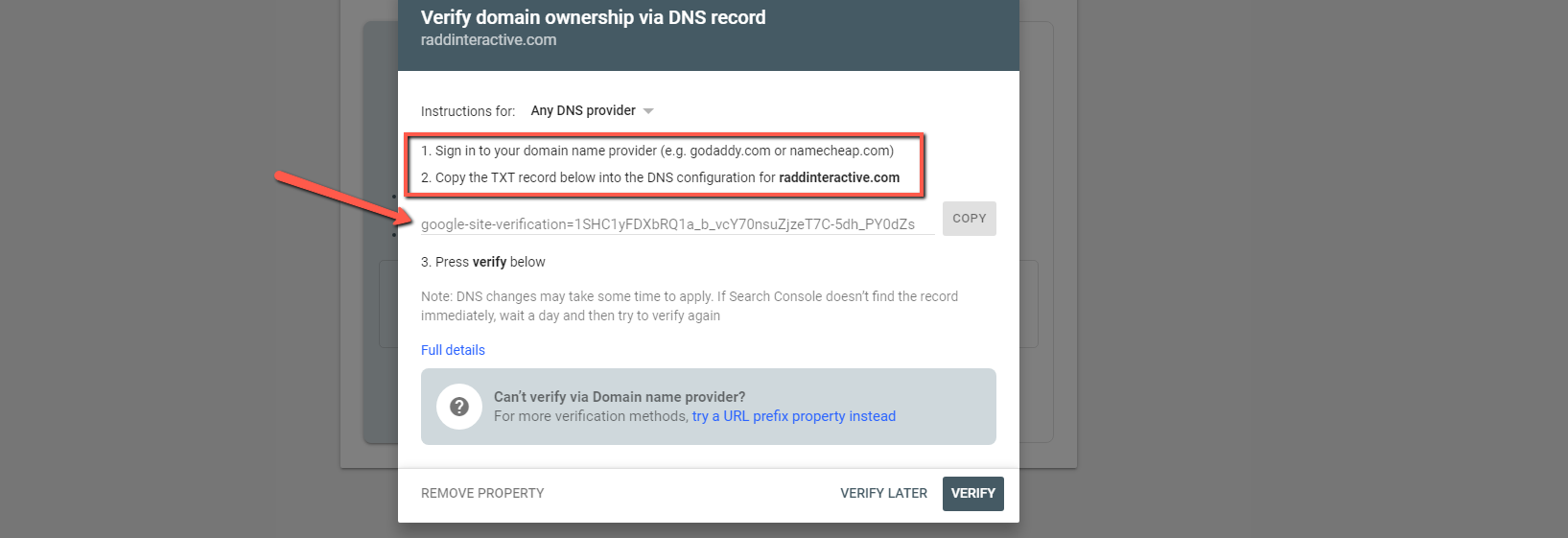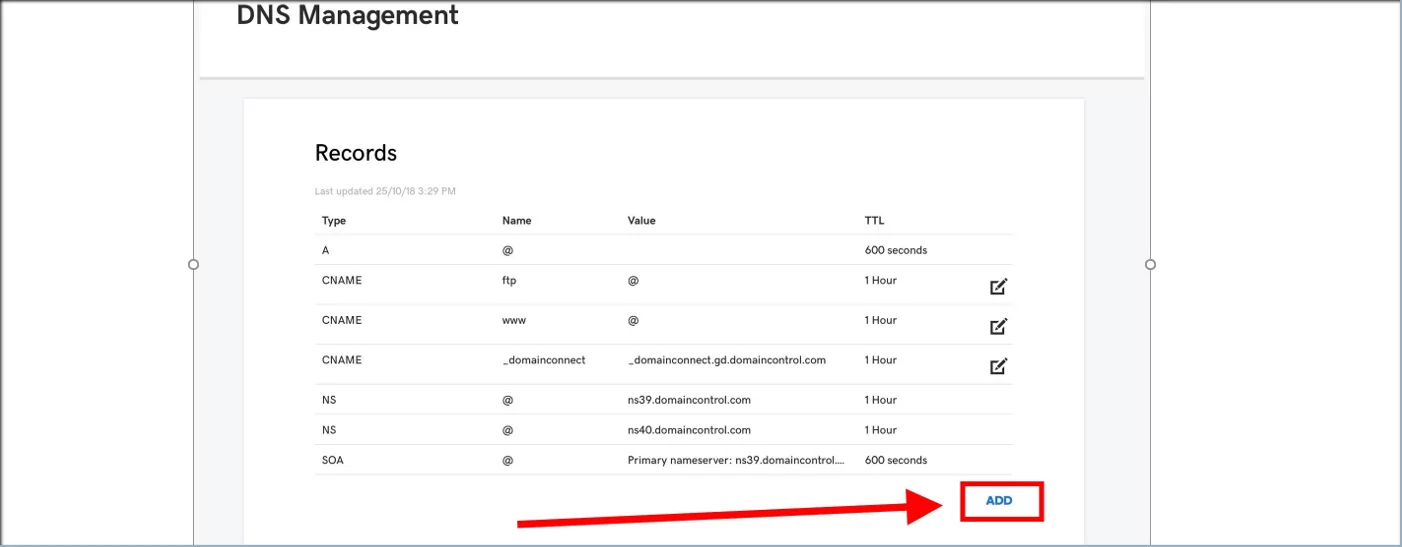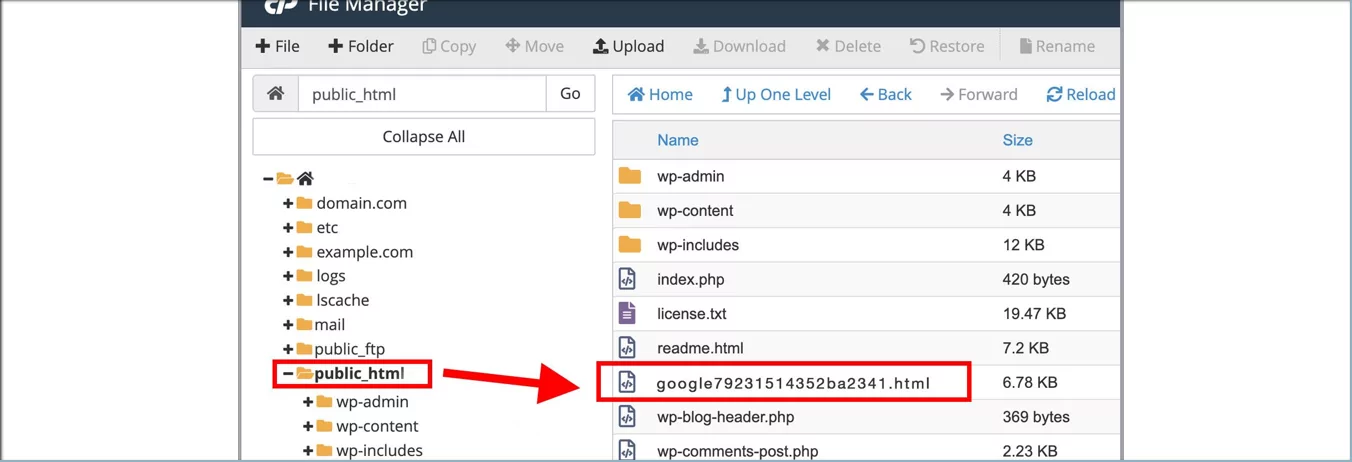How to Set Up Google Search Console (GSC)! Getting Started Easily
Today we’re going to show you how to set up Google Search Console in under 3 minutes.
Getting started with Search Console is super easy. It’s free. And there’s a bunch of ways to set it up, depending on what works best for you.
Google already provides a walkthrough on how to set up Search Console, and verify your site. But frankly, it’s dull, wordy, and abrasive to the eyes. So we’re going to give a more user-friendly guide. Trust us, this is the only guide you’ll ever need on how to set up Google Search Console — the right way.
So let’s get started.
Why use Search Console?
Google Search Console (or GSC) is one of the most — if not most — powerful SEO tools out there.
But why is it important? At its core, Search Console helps you monitor, maintain and optimize your website’s organic search presence. Most primarily use GSC to view clicks and impressions. While that’s cool, it has much more to offer. For example it can:
- Find search queries that drive traffic
- Find how well all your pages rank
- Identify and leverage backlinks to boost link juice
- Add sitemaps
- Locate errors that need fixing
- Ensure eligibility for rich snippets and schema
- Make your site more mobile friendly
- Monitor your Core Web Vitals
- Show if your site has been hacked
And did we mention it’s free?
For more info on why GSC is so valuable to use, check out all the wonderful things Search Console can do for you.
How to set-up a Search Console account
Step 1: Sign in to Search Console With Your Google account.
Note: You’ll need to have a Google account for this method to work when setting up Search Console. Don’t worry, that’s free, too. If you already have Google Analytics, Adwords or Gmail, you can use the same login.
Step 2: Enter Your Website’s Domain (or URL-Prefix) to Add a Property.
After you sign in, you have the option to add a property type via your domain or via a URL prefix.

We recommend you set up Google Search Console using a domain.
Here’s why, starting with some key definitions:
- Property – a catch-all term for a single website, URL, mobile app, or device with a uniroot directory (aka public_html) of your siteque tracking ID
- Domain – the name of your website (without http(s):// and www.). Our domain is raddinteractive.com
- Subdomain – an extension added to a domain, like www.radddinteractive.com or shop.raddinteractive.com
- URL – an address for a web page. (Domain is the name of a site; URL leads to a page within that site)
- URL Prefix – the protocol that appears before your domain. For example, http:// or https://
Setting up Google Search Console via the “Domain” option sets up your account as a domain-level property.
This means you’re creating a single property that includes all subdomains and protocol prefixes associated with your domain. In other words, this option connects Google Search Console to every aspect of your site.
So here’s the next step for how to set up Google Search Console with a domain-level property. Enter your site’s root-domain in the entry field and hit “Continue.”
Selecting “URL-prefix” sets up a URL-prefix property.
This means you’re creating a single property for only one URL prefix for your site. As such, Search Console will only be connected to one version of your site – not the whole thing with all protocols/subdomains – and so it may not provide accurate data. But sometimes you have no choice but to use a URL-prefix.
To set up a URL-prefix property, enter a URL with a prefix in the field, and hit “Continue.”
NOTE: In order to ensure Search Console provides accurate data with URL-prefix properties, create a GSC property for each of the following four URLs:
- https://yourdomain.com
- http://yourdomain.com
- https://www.yourdomain.com
- http://www.yourdomain.com
If you use other subdomains, like blog.yourdomain.com or shop.yourdomain.com, then you’ll want to create a property for each of those too. All told, you will have to repeat the entire Google Search Console set up process for each of these URLs.
Step 3: Verify Your Website
To implement Google Search Console and start gathering data, you need to verify that you own your site. The verification process varies depending on which option you chose in the previous step.
Jump to the instructions that apply to you:
Verification for a Domain Property
There is only one way to verify a domain-level property, and that’s through your DNS provider (or domain name system provider). Here’s the screen you’ll start with.

First, see if you can find your DNS provider (the company you pay to use your domain) in the dropdown:

This will display detailed instructions specific to your provider. If you want to know how to implement Google Search Console for your digital marketing strategy, using this method, you might want to work with either your developer or DNS provider. If you don’t see your provider, you can leave it as “Any DNS service provider.”
Next, hit the “Copy” button to copy the TXT record provided to you by Google.

Once you’ve copied the TXT record, open your domain registrar’s site in a new tab (for example GoDaddy, BlueHost, Hostgator, etc…) and log into your account with them.
Navigate to the list of domains you own and select the one you wish to configure. Find the option to manage your DNS records. This will be located in different places, depending on your provider’s site. Look for any mention of “DNS” and click it.
For example, on GoDaddy you would go to “My Account > My Products” and select “DNS” next to your domain.

You’ll then be brought to a Domain Management screen where you’ll find a list of your DNS Records. Select “Add” to create a new one.

Select “Type” choose TXT. Under “Host” type in the @ symbol. Leave “TTL” at 1 hour. And, most importantly, paste the TXT record you got from Google into the field for “TXT Value.” Then hit “Save.”

This will add a new TXT record for Google Search Console. (In case you’re wondering, a TXT record is used to provide info about your domain to an outside source — e.g. show Google you own a domain.)
The process we just outlined above for GoDaddy is very similar for all domain providers. You can even use the same entries for “Type,” “Hostname,” and “TTL.” Some providers will ask for “TXT Record” instead of “TXT Value.”
With your TXT record added, return to the Google Search Console set up and select “Verify.”
If everything went according to plan, you should see a message like this:

Keep in mind, updating DNS records can take up to 72 hours. If your ownership isn’t verified immediately, come back in a few hours or the next day, and check again.
If this still doesn’t work and you want help verifying your domain, get in touch with us. We’re happy to help.
Verification for a URL-prefix Property
If you don’t have access to your registrar or would rather not mess with your DNS records, you can set up Google Search Console using a URL-prefix property. This provides a number of alternative options for verification.

Google recommends verifying via an HTML file. (But remember, this is just for URL-prefix properties. Ultimately, they recommend you create a Domain property, if possible.)
Notice there’s an option to verify via domain name provider. We showed how to do that above. But if you’re considering using that method, you might as well create a domain-level property.
Here’s how to verify via the other methods.
HTML File
For this method you need to upload an HTML file to the root folder of your website. It’s easy to do, but the downside is you will need to have access to your server, either via FTP or a cPanel File Manager. If you’re not familiar with either don’t attempt to verify via this method.

If you comfortable working with your site’s server, here’s how you verify using an HTML file:
- Download the file provided by Google. (By clicking the download box shown in the image above.)
- Access the root directory (aka public_html) of your site.
- Upload the file. (Like the image example of how the file will appear shown below)
- Return to Search Console, and select “Verify”

HTML Tag
To verify using the HTML tag you need to add a meta tag to your site’s <head> section. To do so you’ll need to have developer access to your site’s CMS. We’ll use WordPress as an example.
Using WordPress, there are two ways you can do this:
- Adding the meta tag directly to your header.php file
- Using a plugin to add to the header
More than likely you’ll go with option two. Because if you’re comfortable working with the header.php, you’re better off verifying via HTML file.
Here are the steps to add the GSC HTML tag to WordPress using a plugin:
- Copy the tag.
- Log into your site’s WordPress admin in a new tab.
- Install the Insert Headers and Footers plugin on your site.
- Go to Settings>Insert Headers and Footers.
- Past the Search Console meta tag in the “Scripts in Header” field.
- Return to Search Console, and select “Verify”
Google Analytics
If you have a Google Analytics account and installed a tracking code on your site, you can follow the steps for getting started with Google Search Console by verifying a User-prefix property through there. Just open up the Google Analytics verification box in Search Console like shown below….

….and then click “Verify.”
For this to work, be sure you selected “edit” rights in Google Analytics for the item whose tracking code is being used by that property. If you haven’t yet added a Google Analytics tracking code — like analytics.js or gtag.js — to your site, then you’ll need to do that first.
Google Tag Manager
Similar to the Google Analytics verification method, if you are already using Google Tag Manager, you can verify with a single click.
Open up the Google Tag verification box in Google Search Console…

….and click “Verify.”
For this to work you need to have the Tag Manager snippet already installed on your site AND have permissions for Tag Manager set to “Publish.”
Additional Google Search Console Setups
There are other ways to create a Google Search Console account, depending on your CMS. These include:
- WordPress
- Blogger
- Google Sites
Implement GSC on WordPress
We showed above how to verify Search Console on WordPress using an HTML tag and header plugin. But you can also verify using your WordPress SEO plugin. The two most popular SEO plugins are Yoast SEO and All-in-One SEO.
Here’s how to set up Google Search Console with each:
- Create a GSC account and add a URL-prefix property (as show in Steps 1 and 2 above).
- Copy the HTML tag provided.
- For Yoast SEO: In your WordPress Dashboard go to SEO>General. Select the “Webmaster Tools” tab. Paste your HTML tag into the field for Google verification code. Hit “Save changes.” (As shown in the first image below.)
- For All-in-One SEO: In your WordPress Dashboard go to All in One SEO>General Settings. Paste your HTML tag into the field for Google Webmaster Tools (what Search Console used to be called). Then hit “Update.” (As shown in the second image below.)
- Note: Yoast and All-in-One will automatically strip the code so only the tag ID shows after saving.
- Go back to Google Search Console and select “Verify.”


Implement GSC on Blogger
Any new blogs created in Blogger are verified automatically in your Search Console account. (So long as you log into Search Console with the same account used to manage your Blogger account.)
If you have an older Blogger account, you can set up Search Console using the HTML tag method, as shown above.
Implement GSC on Google Sites
If you use a new Google Site (anything created after 2016), verify using the Google Analytics method, above.
If you use a classic Google Site (anything created prior to 2016) OR have a Google Site with a custom domain URL (e.g. something other than sites.google.com), use the HTML tag method.
Next steps: get your site submitted
So now what?
Getting started with Google Search Console also means getting familiar with the reports and the site maps submission tool. You now know how to implement Google Search Console for your website. Of course, if one of those methods isn’t working for you, or you want assistance setting up GSC, we can help you.
Once you’ve set up your account and verified your website, you might be wondering: “how do I get my business listed in Google search results?”
Fortunately that’s very straightforward.
Once you’ve finished the setup the next step is to submit your sitemap to GSC.
Submitting your XML sitemap is a key ranking factor for SEO, so you definitely want to make sure you’ve done it correctly. To ensure you do, here’s a walkthrough for how to add a sitemap to Google Search Console.
You can usually find your site’s sitemap buy adding “/sitemap.xml” to the end of your domain and visiting the file in your browser. If this doesn’t work you may need to check your content management system (CMS) settings to see if it is creating a sitemap for you. You can also check your “robots.txt” file to see if it’s listed there.
In your Search Console, navigate to Sitemaps in the left side menu. Here you can add the URI for the location of your sitemap. Google can make note of the submitted URLs immediately, and after a few days your URLs should be mostly crawled and indexed!

Learn More
Contact us to learn more about resources and strategies for improving your technical SEO. Fill out the form below to get in touch or to keep up to date with future blog posts.
